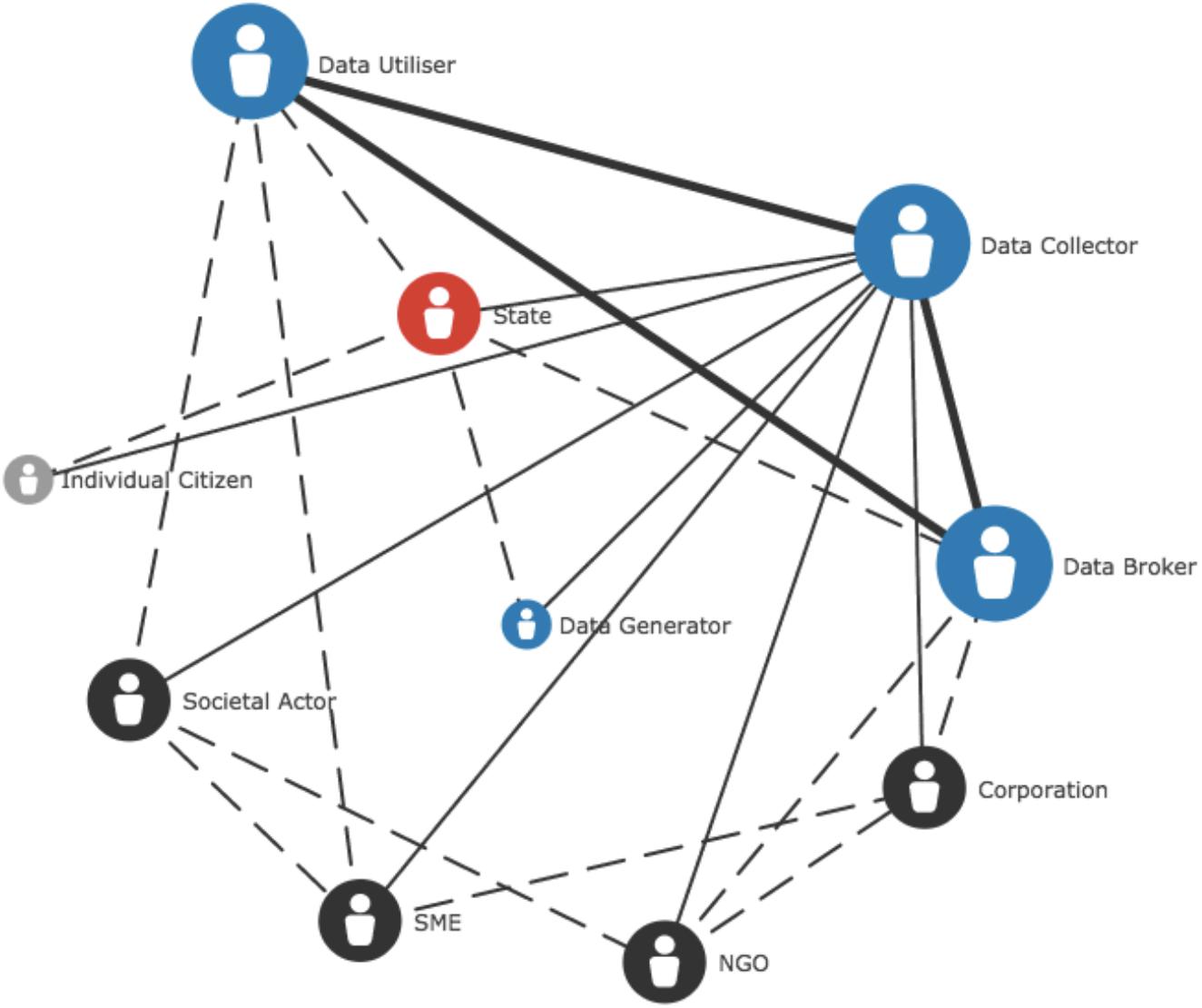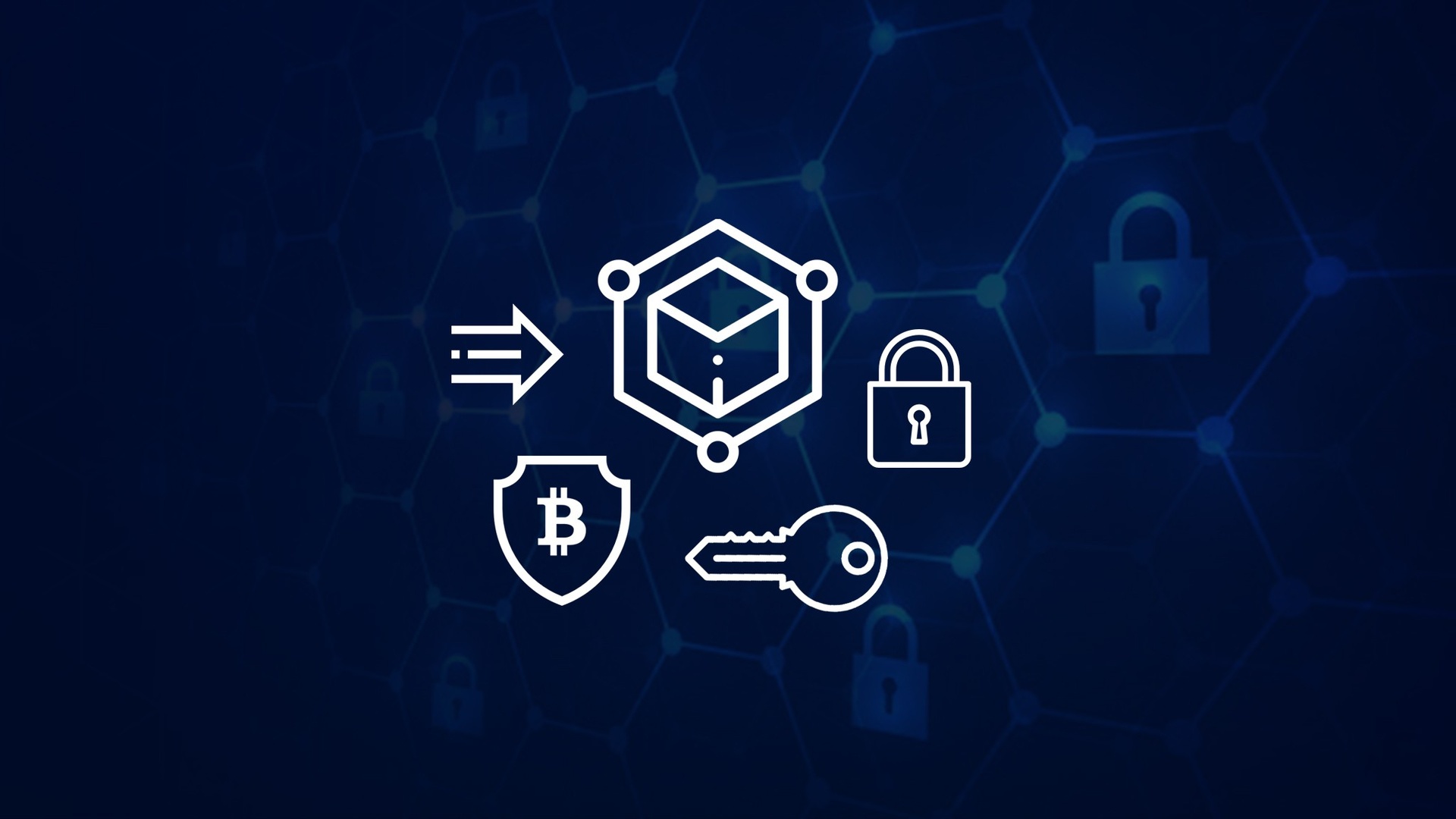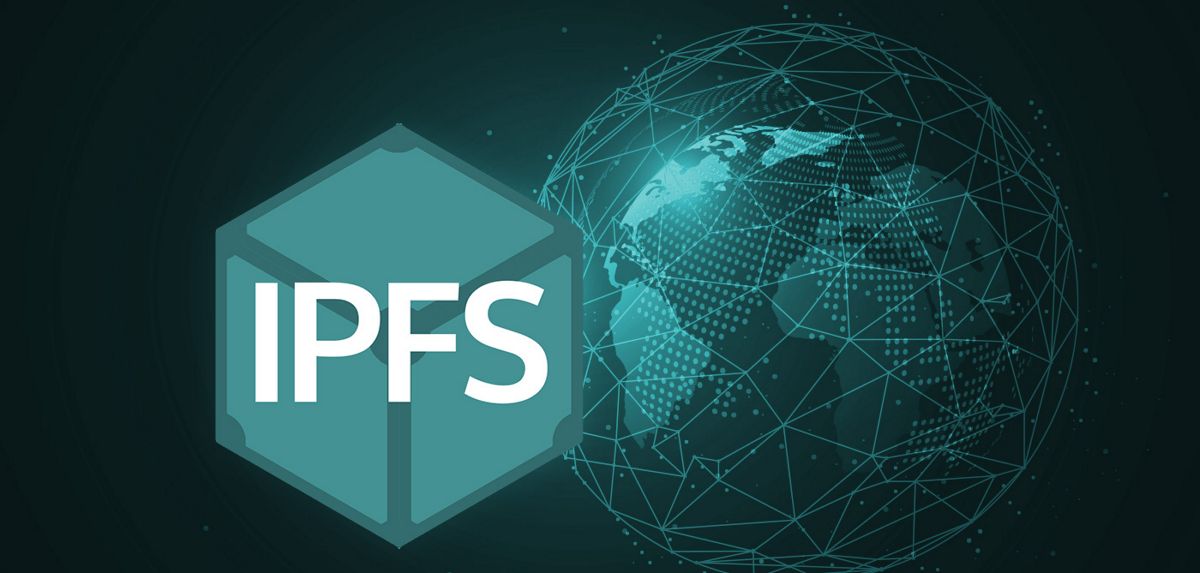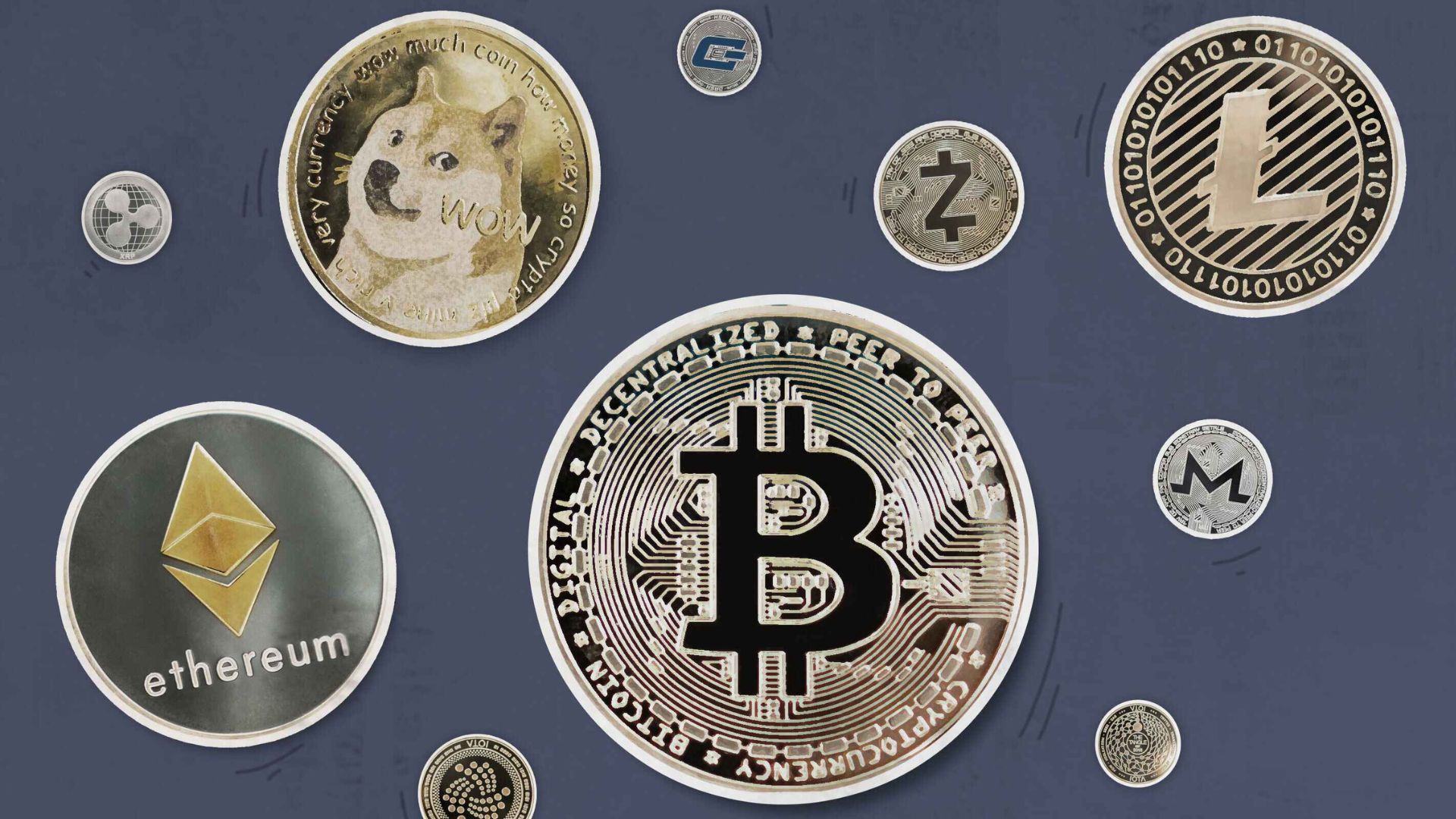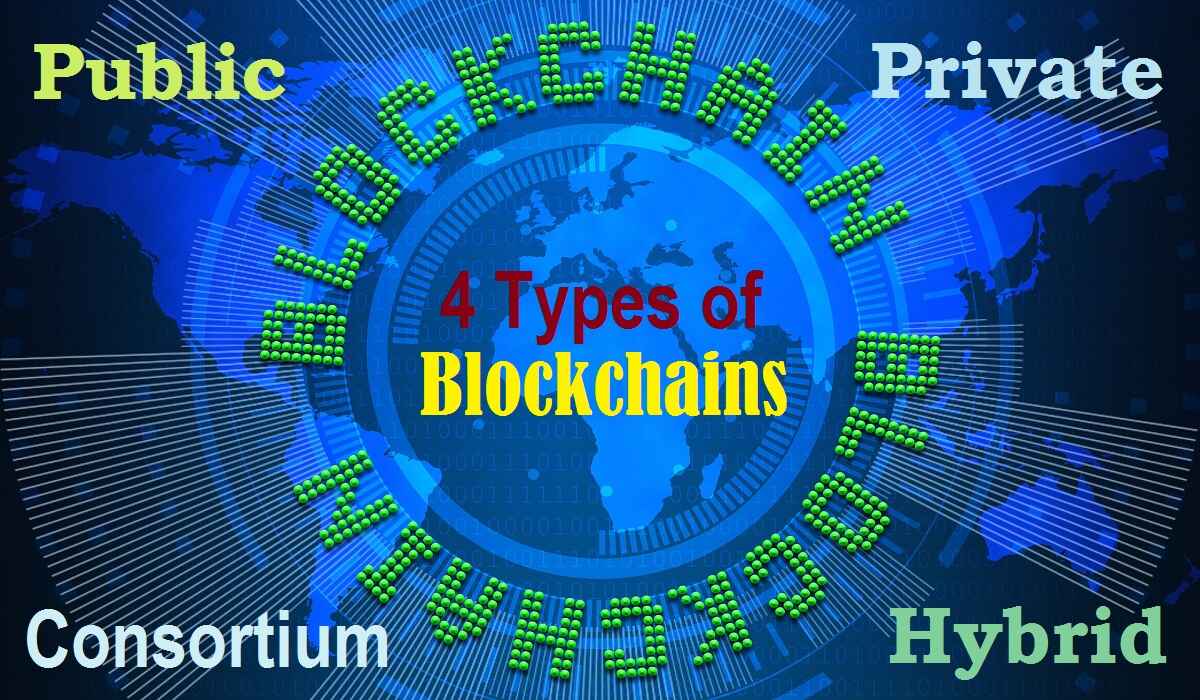Introduction
Welcome to the world of decentralized blockchains! In recent years, blockchain technology has taken the world by storm, revolutionizing industries and transforming the way we transact and interact online. But what exactly is a decentralized blockchain, and why is it so important?
A decentralized blockchain is a digital ledger that allows multiple participants to maintain, validate, and update a shared database without the need for a central authority. Unlike traditional centralized systems where control and decision-making rest in the hands of a single entity, decentralized blockchains distribute power, authority, and responsibility across a network of nodes.
At its core, a decentralized blockchain operates on the principles of transparency, immutability, and consensus. Every transaction and piece of data recorded on the blockchain is verified by a network of computers (nodes) through complex algorithms. Once verified, the information is stored in a ‘block’ and added to an ever-growing chain of blocks.
Decentralized blockchains offer a range of benefits that have captured the attention of industries and individuals worldwide. Firstly, the distributed nature of the blockchain ensures that there is no single point of failure. This means that even if one or several nodes go offline or are compromised, the network as a whole remains intact and operational.
Moreover, the transparency of a decentralized blockchain enables participants to have a clear and verifiable view of all transactions and data recorded on the network. This not only enhances trust but also reduces the risk of fraud and manipulation.
Another key advantage of decentralized blockchains lies in their ability to bypass intermediaries. By cutting out middlemen, such as banks or payment processors, transactions can be executed directly between parties, reducing costs, and increasing efficiency.
The applications of decentralized blockchains are vast and diverse. In the financial sector, cryptocurrencies like Bitcoin and Ethereum have gained popularity as decentralized forms of digital currency. Smart contracts, powered by decentralized blockchains, are revolutionizing the way agreements and legal documents are executed.
Other industries, such as supply chain management, healthcare, and voting systems, have also recognized the potential of decentralized blockchains in enhancing security, traceability, and accountability.
However, it is important to acknowledge that decentralized blockchains also face challenges and limitations. The high energy consumption associated with mining, scalability issues, and regulatory hurdles are just a few of the obstacles that need to be addressed for wider adoption and implementation.
As we delve deeper into the world of decentralized blockchains, we will explore these benefits, use cases, challenges, and limitations of this groundbreaking technology. So fasten your seatbelts, embrace the decentralized revolution, and get ready for an exciting journey!
Definition of a Decentralized Blockchain
A decentralized blockchain is a type of digital ledger that utilizes a distributed network of nodes to record, validate, and store transactions and data in a secure and transparent manner. Unlike traditional centralized systems, where a central authority holds the power to govern and control the database, a decentralized blockchain operates based on consensus among its participants.
In a decentralized blockchain network, each participant, known as a node, maintains a copy of the entire blockchain. Through a consensus mechanism, such as proof-of-work or proof-of-stake, the nodes collectively agree on the validity of transactions and add them to the blockchain by creating a new block.
One of the key features of a decentralized blockchain is its transparency. Every transaction recorded on the blockchain is visible to all participants in the network, ensuring trust and eliminating the need for intermediaries. This transparency enhances the security of the system by allowing participants to verify the integrity of the data and detect any attempts at fraudulent activities.
Immutability is another crucial characteristic of a decentralized blockchain. Once a block is added to the chain, it becomes permanent and cannot be altered or deleted without the consensus of the majority of participants. This immutability ensures the integrity and tamper-proof nature of the data stored on the blockchain.
Decentralized blockchains also utilize cryptographic algorithms to secure the data stored on the network. Transactions and information are encrypted, ensuring that only authorized participants can access and modify the data. This cryptographic security adds an extra layer of protection against unauthorized access and tampering.
Furthermore, the decentralized nature of blockchain offers resilience and fault tolerance. Unlike centralized systems, where a single point of failure can disrupt the entire network, decentralized blockchains distribute data and processing power across multiple nodes. This redundancy ensures that the network remains operational, even if some nodes experience failures or attacks.
Overall, a decentralized blockchain is a powerful technology that allows for secure, transparent, and efficient transactions and data management. Its distributed nature, transparency, immutability, and cryptographic security make it well-suited for a wide range of applications, from finance and supply chain management to healthcare and voting systems.
As we delve deeper into the world of decentralized blockchains, we will explore the mechanics behind their operation, their numerous benefits, and the challenges they face in achieving widespread adoption. So, strap in and get ready to unravel the complexities of this transformative technology!
How a Decentralized Blockchain Works
Understanding how a decentralized blockchain works requires taking a closer look at its key components and processes. At its core, a decentralized blockchain operates through a combination of consensus mechanisms, cryptographic techniques, and a distributed network of nodes.
The first crucial component of a decentralized blockchain is the network of nodes. These nodes are separate participants on the network that maintain a copy of the entire blockchain. Nodes can be computers, servers, or even individual devices connected to the internet.
When a transaction occurs, it is broadcasted to the network. The nodes then compete to validate and add the transaction to the blockchain through a consensus mechanism. The most commonly used consensus mechanism is proof-of-work (PoW), where nodes compete to solve complex mathematical problems. The first node to solve the problem validates the transaction and adds it to a new block.
Once a transaction is validated and added to a block, that block is linked to the previous block through a cryptographic hash function. This creates an unbreakable chain of blocks, hence the term “blockchain.” The cryptographic hash functions ensure the integrity and tamper-proof nature of the blockchain by creating a unique identifier for each block based on its content.
As the blockchain grows, it becomes increasingly difficult to alter the data in previous blocks. This immutability of the blockchain provides a high level of security and makes it virtually impossible to modify transactions or alter the historical records.
In addition to security, decentralization also brings about the need for consensus among nodes. Nodes need to agree on the validity of transactions and the order in which they are added to the blockchain. This consensus is achieved through various mechanisms such as PoW, proof-of-stake (PoS), or delegated proof-of-stake (DPoS).
While PoW involves computational tasks and solving mathematical puzzles, PoS and DPoS rely on the ownership of cryptocurrency tokens to determine the right to validate transactions and create new blocks. These consensus mechanisms not only secure the blockchain but also incentivize nodes to behave honestly and prevent malicious activities.
Furthermore, decentralized blockchains utilize cryptographic techniques to secure transactions and data. Transactions are encrypted and digitally signed to ensure that only authorized parties can access and modify them. Cryptography also plays a role in maintaining the privacy and anonymity of participants, depending on the specific blockchain protocol.
In summary, a decentralized blockchain operates through a network of nodes that validate and add transactions to the blockchain through consensus mechanisms. The immutability and cryptographic security of the blockchain ensure the integrity and tamper-proof nature of the data. By distributing power and authority across the network, decentralized blockchains provide a transparent and efficient way to conduct transactions and manage data without the need for intermediaries.
Benefits of a Decentralized Blockchain
Decentralized blockchains offer a myriad of benefits that have captivated industries and individuals alike. Let’s explore some of the key advantages:
- Enhanced Security: A decentralized blockchain provides a higher level of security compared to traditional centralized systems. The distributed nature of the blockchain eliminates the vulnerability associated with a single central point of failure. Each transaction recorded on the blockchain is encrypted, digitally signed, and verified by multiple nodes, making it extremely difficult for malicious actors to tamper with or alter the data.
- Transparency and Trust: Transparency is a foundational principle of decentralized blockchains. All participants have access to the same copy of the blockchain, allowing for complete transparency and visibility of transactions. This transparency builds trust among participants by ensuring that no one party has the ability to manipulate or modify the data without consensus. Additionally, the immutable nature of the blockchain ensures that past transactions cannot be changed, further instilling trust in the system.
- Elimination of Intermediaries: Decentralized blockchains have the potential to eliminate intermediaries such as banks, payment processors, and other centralized authorities. With smart contracts, transactions can be executed directly between parties, cutting out the need for intermediaries and reducing associated costs and delays. This peer-to-peer nature of transactions streamlines processes and increases efficiency.
- Cost Savings: By removing intermediaries and reducing the need for manual processes, decentralized blockchains offer significant cost savings. Traditional financial transactions and cross-border transfers often incur hefty fees. With decentralized cryptocurrencies, transactions can be conducted at a fraction of the cost. Furthermore, decentralized systems reduce overhead costs such as infrastructure and administrative expenses.
- Improved Efficiency: The decentralized nature of blockchains enables faster and more efficient transactions. Unlike traditional systems that involve multiple parties and complex reconciliations, decentralized blockchains facilitate direct, peer-to-peer transactions that are processed and validated within the network. This eliminates the need for time-consuming intermediaries and reduces the overall transaction time and latency.
- Global Accessibility: Decentralized blockchains have no geographical limitations. Participants can join the network and access the blockchain from anywhere in the world, as long as they have an internet connection. This global accessibility opens up new opportunities for financial inclusion, allowing individuals in underserved regions to access banking and financial services.
The benefits of decentralized blockchains extend beyond the financial sector. Industries such as supply chain management, healthcare, and voting systems are leveraging the technology to improve traceability, enhance data security, and increase transparency. Additionally, decentralized blockchains enable individuals to regain control of their personal data by providing secure and private means of data management.
While decentralized blockchains offer numerous advantages, it is important to address the challenges and limitations associated with the technology. These challenges include scalability issues, energy consumption, and regulatory frameworks. However, the potential for innovation and positive impact provided by decentralized blockchains makes them an exciting and promising technology for diverse applications.
Use Cases of Decentralized Blockchains
Decentralized blockchains have gained significant traction across various industries due to their potential to improve security, transparency, and efficiency. Let’s explore some of the notable use cases:
- Cryptocurrencies: Perhaps the most well-known use case of decentralized blockchains is cryptocurrencies. Bitcoin, the first decentralized cryptocurrency, introduced the world to a new way of conducting financial transactions. Today, a plethora of cryptocurrencies powered by decentralized blockchains offer alternative forms of digital currency for global transactions.
- Supply Chain Management: The traceability and immutability of decentralized blockchains make them ideal for supply chain management. Blockchain technology enables the tracking of goods from the point of origin to the end consumer, providing transparency and preventing fraud. This use case has gained attention in industries such as food and pharmaceuticals, where product authenticity and safety are critical.
- Smart Contracts: A smart contract is a self-executing contract with the terms of the agreement directly written into code on the blockchain. Decentralized blockchains allow for the secure and automated execution of smart contracts, eliminating the need for intermediaries and reducing the potential for disputes. Smart contracts find applications in areas such as real estate, insurance, and supply chain management.
- Identity Management: Decentralized blockchains provide a secure and decentralized means of managing identities. Instead of relying on centralized databases vulnerable to hacks, decentralized identities enable individuals to have control over their personal information and selectively share it with authorized entities or parties. This use case has the potential to transform digital identity verification processes.
- Decentralized Finance (DeFi): Decentralized blockchains have played a significant role in the rise of decentralized finance (DeFi). DeFi aims to provide financial services, such as lending, borrowing, and trading, without the need for intermediaries. By leveraging decentralized blockchains, DeFi platforms offer transparency, security, and accessibility to a wider range of individuals around the world.
- Healthcare: Blockchain technology holds great promise in the healthcare industry. Decentralized blockchains can securely store and share medical records, ensuring data integrity and privacy. This can help streamline processes, reduce duplicate tests and prescriptions, and improve patient care by providing a comprehensive view of a patient’s medical history.
- Voting Systems: Decentralized blockchains have the potential to revolutionize voting systems, making them more transparent, secure, and efficient. By leveraging blockchain’s immutability and transparency, voting systems can ensure the integrity of the voting process, prevent tampering, and provide verifiable results. Decentralized voting systems could increase voter participation and help build trust in democratic processes.
These are just a few examples of the diverse applications of decentralized blockchains. The technology’s underlying principles of transparency, security, and decentralization have the potential to transform numerous industries and enable new business models. As decentralized blockchain technology continues to evolve, we can expect to see further innovation and adoption across a wide range of sectors.
Challenges and Limitations of Decentralized Blockchains
While decentralized blockchains offer a range of benefits, they also face several challenges and limitations that need to be addressed for wider adoption and scalability. Let’s explore some of the key challenges:
- Scalability: One of the major challenges of decentralized blockchains is scalability. As the number of transactions and participants increases, the blockchain can become congested and the transaction speed can decrease. With the current blockchain infrastructure, the limitations of transaction throughput and block size pose scalability challenges that need to be overcome to support mass adoption.
- Energy Consumption: Decentralized blockchains, especially those that rely on proof-of-work consensus mechanisms, require substantial computational power and energy consumption. Mining, the process of validating and adding transactions to the blockchain, consumes significant amounts of electricity. Finding more energy-efficient consensus mechanisms is essential to address the environmental impact of blockchain technology.
- Regulatory Uncertainty: Blockchain technology operates across geographical boundaries, making it challenging for regulatory bodies to develop comprehensive frameworks. The lack of clear regulations can create uncertainty for businesses and hinder the wider adoption of decentralized blockchains. Striking the right balance between promoting innovation and safeguarding against illegal activities remains a challenge.
- Interoperability: The lack of standardization and interoperability between different blockchain protocols is a limiting factor. As various blockchain platforms emerge, interoperability becomes crucial to enable seamless communication and integration between different decentralized networks. Efforts are underway to develop interoperability solutions that can bridge different blockchain ecosystems.
- User Experience: The user experience of decentralized blockchain applications can be complex and challenging, especially for non-technical users. Issues such as private key management, wallet security, and transaction fees can create barriers to entry. Improving the user interface, simplifying the onboarding process, and enhancing user education are essential to make decentralized blockchains more accessible and user-friendly.
- Privacy Concerns: While blockchain technology provides transparency and immutability, ensuring privacy can be a challenge. On a public blockchain, all transactions and data are visible to all participants, which may not be desirable in certain use cases. Striking a balance between transparency and privacy is vital, and advancements in privacy-enhancing technologies are being developed to address this concern.
Overcoming these challenges requires continuous research, innovation, and collaboration within the blockchain community. Scalability solutions like sharding and layer-2 protocols aim to improve transaction throughput. The development of alternative consensus mechanisms, such as proof-of-stake, helps reduce energy consumption. Regulatory frameworks are evolving to provide clearer guidelines for blockchain technology, promoting its responsible and regulated use.
As decentralized blockchains continue to mature and evolve, addressing these challenges will unlock their full potential and drive widespread adoption across various industries and use cases.
Comparison to Centralized Blockchains
When discussing decentralized blockchains, it is essential to understand the key differences and advantages they offer compared to centralized blockchains. Let’s explore the comparison between the two:
1. Control and Governance: In centralized blockchains, control and decision-making reside with a central authority or organization. This centralized control can lead to potential vulnerabilities, as a single point of failure can compromise the entire system. On the other hand, decentralized blockchains distribute control and governance across a network of nodes, eliminating the dependence on a central authority and enhancing system resilience.
2. Transparency and Trust: Centralized blockchains often lack transparency, as participants must trust the central authority to accurately record and manage transactions. In contrast, decentralized blockchains provide unparalleled transparency, as all transactions are recorded on a public ledger visible to all participants. This transparency enhances trust and reduces the risk of fraud or manipulation.
3. Security: Centralized blockchains face a higher risk of cyberattacks, as a single point of entry can provide malicious actors with access to sensitive data. Decentralized blockchains, with their distributed architecture, offer enhanced security. The decentralized nature of the network makes it difficult for an attacker to compromise the entire system, as they would need to gain control of a majority of the nodes, which is highly improbable.
4. Efficiency and Speed: Centralized blockchains often provide faster transaction processing speeds compared to their decentralized counterparts. This is because centralized systems do not require consensus mechanisms among multiple nodes, allowing for quicker validation and processing of transactions. However, decentralized blockchains offer increased transparency, security, and immutability at the expense of slightly slower transaction speeds.
5. Accessibility and Permission: Centralized blockchains often require permission or authorization from a central authority to access and participate in the network. In contrast, decentralized blockchains offer greater accessibility, as anyone with an internet connection can join the network and interact with it without the need for permission. This feature opens up opportunities for financial inclusion and global participation.
6. Governance and Upgrades: Decentralized blockchains rely on consensus mechanisms to make changes or upgrades to the network. These changes require agreement among the majority of the network participants, ensuring democratic governance. In contrast, centralized blockchains can be easily upgraded or modified by the central authority, which may raise concerns about transparency and control.
7. Flexibility and Innovation: Centralized blockchains often face limitations when it comes to flexibility and innovation. The centralized nature of decision-making can hinder the implementation of new ideas and hinder rapid development. Decentralized blockchains, on the other hand, foster innovation and enable creativity by allowing anyone to propose and implement new features or improvements.
While centralized blockchains may still have advantages in terms of speed and efficiency in certain scenarios, the numerous benefits of decentralization, such as enhanced security, transparency, and trust, have made decentralized blockchains increasingly popular in a wide range of industries.
Understanding the differences between centralized and decentralized blockchains helps individuals and organizations make informed decisions about which approach best suits their specific needs and goals. The trade-offs between centralization and decentralization should be carefully considered when implementing blockchain technology.
Conclusion
Decentralized blockchains have emerged as a transformative technology with the potential to revolutionize industries and reshape the way we transact and interact online. These blockchain networks, built on principles of transparency, security, and decentralization, offer a range of benefits that have captured the attention of businesses and individuals worldwide.
The transparency and immutability provided by decentralized blockchains build trust among participants, making them invaluable in industries that require traceability, accountability, and data integrity. Eliminating the need for intermediaries, decentralized blockchains streamline processes, reduce costs, and increase efficiency. Additionally, the distributed nature of these blockchains enhances security and resilience, ensuring that no single point of failure can compromise the entire system.
Decentralized blockchains find applications across various sectors, from finance and supply chain management to healthcare and voting systems. Cryptocurrencies, smart contracts, and decentralized finance have demonstrated the potential for financial disruption and inclusion.
While decentralized blockchains offer numerous advantages, they also face challenges and limitations that need to be addressed. Scalability, energy consumption, regulatory uncertainty, and usability are among the hurdles that must be overcome to achieve wider adoption and scalability. Ongoing research, innovation, and collaboration within the blockchain community are essential to tackle these challenges and find viable solutions.
As the world continues to explore and harness the power of decentralized blockchains, it is crucial to strike a balance between the benefits of decentralization and the practical considerations needed for successful implementation. Ultimately, the journey towards realizing the full potential of decentralized blockchains is a collaborative effort involving technology enthusiasts, businesses, governments, and society at large.
The future holds immense promise for decentralized blockchains, as they continue to evolve and revolutionize industries, create new opportunities, and empower individuals globally. With ongoing advancements and wider adoption, decentralized blockchains have the potential to reshape our digital landscape and create a more transparent, efficient, and inclusive world.







